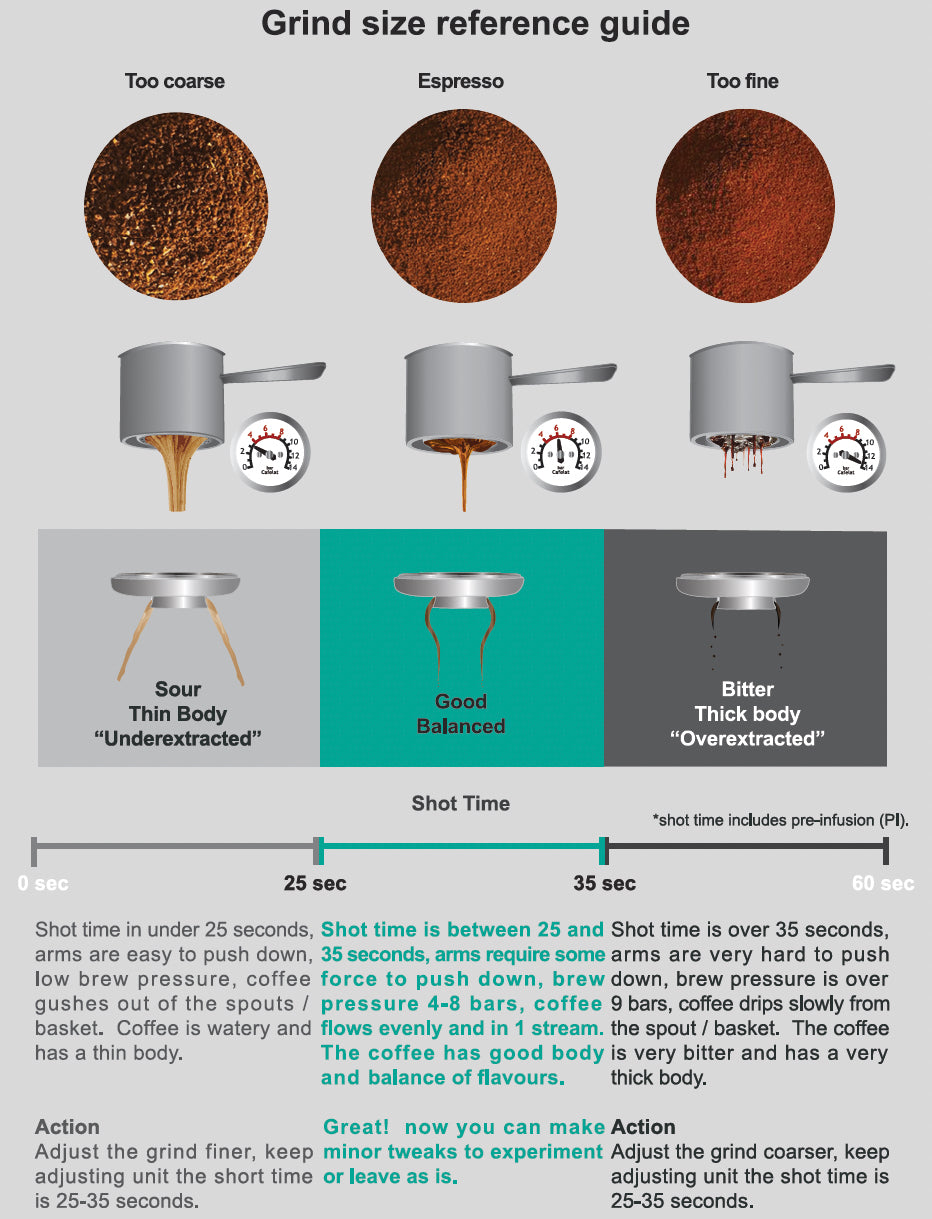For any home barista, mastering espresso extraction timing can significantly elevate your coffee-making journey. The magic of a perfect espresso lies in the intricate balance of timing, grind size, and flow rate. When I first started learning the ropes, this process seemed daunting. However, once I understood the basics, it became an exciting and deeply rewarding experience. Dive into the features and performance in our DeLonghi Magnifica Evo review
Why Timing Matters in Espresso Extraction
Timing plays a crucial role in brewing a consistent and flavorful shot of espresso. It has a direct impact on the flavors that are extracted from the coffee grounds. An extraction that's too quick results in an under-extracted espresso, typically characterized by sourness and sharp acidity, lacking complexity. On the other hand, letting the extraction go on for too long often brings out bitterness and an unpleasant aftertaste, which are signs of over-extraction. Learn why this classic model stands out in our DeLonghi Magnifica S review

Different Methods for Timing Espresso Extraction
In my experience, there are generally two popular methods for timing an espresso shot. Some baristas start their timer the moment the pump is activated, while others begin when they see the first drop of espresso. Personally, I prefer to start timing as soon as I press the espresso button. This approach includes the pre-infusion stage and helps me keep consistency between different shots. Discover the convenience and technology in our Philips LatteGo 5400 review
How to Find the Ideal Extraction Time
The optimal extraction time is typically between 25 to 35 seconds. After lots of experimentation, I have found that aiming for around 30 seconds often produces a balanced and flavorful espresso. Shots that take less than 25 seconds usually end up weak and overly acidic, indicating under-extraction. On the flip side, anything beyond 35 seconds tends to lean towards bitterness and an over-extracted flavor. Explore the compact design and features in our Philips 3200 LatteGo review
Adjusting the Grind Size to Hit the Right Timing
The timing of your espresso shot is closely tied to the grind size. A finer grind will slow down the extraction, whereas a coarser grind will speed it up. If your shot is pulling too quickly (under 25 seconds), it probably means your grind is too coarse. On the other hand, if the shot takes longer than 35 seconds, it's likely that the grind is too fine. After multiple trials, I've discovered the ideal grind size that has significantly improved the consistency and flavor of my espresso. Get all the details on versatility and functionality in our Philips 4300 LatteGo review
Let Flavor Guide Your Adjustments
Although timing is important, it's crucial to let flavor guide your adjustments. A well-balanced shot of espresso should have a delightful blend of sweetness, acidity, and body. If your espresso tastes overly sour or watery, it may indicate under-extraction, which could be fixed by a finer grind or a change in brew ratio. Conversely, bitterness and dryness indicate over-extraction, which may require a coarser grind or a shorter extraction time.
Troubleshooting Common Extraction Issues
Here are some common challenges I've encountered during espresso extraction, along with ways to address them:
Under-extraction: If your shot takes less than 25 seconds and tastes sour, the grind is likely too coarse. Try adjusting to a finer grind and test again.
Over-extraction: If your shot exceeds 35 seconds and has a bitter taste, it likely means the grind is too fine. Switching to a coarser grind may help balance out the flavors.
How Pre-Infusion Affects Timing
Pre-infusion can have a significant effect on your total extraction time. Many higher-end espresso machines come with a pre-infusion feature that helps to evenly saturate the coffee grounds before applying full pressure. Incorporating pre-infusion can enhance consistency and flavor extraction. If your machine lacks automatic pre-infusion, you can still replicate the effect by briefly starting and stopping the pump.
Fine-Tuning Flavor with Brew Ratios
Another crucial factor in achieving optimal extraction is the brew ratio—the ratio of ground coffee to the liquid espresso output. A good starting point is a 1:2 ratio, such as using 18 grams of coffee to yield 36 grams of espresso. Tweaking this ratio can unlock a variety of flavors depending on the coffee type.
For lighter roasts, using a longer extraction or a lower brew ratio (e.g., 1:2.5) can help emphasize fruity, vibrant notes. Conversely, with darker roasts, sticking to a standard 1:2 ratio can help reduce bitterness while retaining body and richness.
The Role of Sensory Evaluation
Above all else, sensory evaluation is key to pulling a great shot of espresso. Timing provides a consistent framework, but ultimately, flavor is the true test of a successful shot. There have been times when shots extracted at the "ideal" time didn't taste quite right, and the culprit often came down to issues with grind size or brew ratios. Through repeated tasting and adjusting these variables, I've learned how to produce shots that are consistently delicious.
Conclusion: Achieving Mastery in Espresso Extraction
Perfecting the art of espresso extraction takes practice, patience, and dedication. By focusing on key factors like timing, grind size, and flavor, you can quickly improve your skills and brew espresso that rivals your favorite coffee shop. Embrace the process of experimentation, and use your sensory experiences to refine and perfect your espresso craft.
